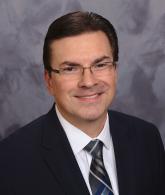Training, practice and technology pay off in real emergencies
Long-term care communities around the nation certainly have put a great deal of focus on Emergency Preparedness the past few years. As CMS prepares to enforce more stringent regulations on licensed skilled nursing facilities (SNF) for this area of operations, many providers have ramped up their efforts to help ensure compliance. In addition to complying with regulations and best practices, providers must understand that enhanced emergency management capabilities will not only help comply with the regulations but also will pay off when handling real-world events.
Two incidents in the past several months illustrate the importance of training, practice and technology when managing emergencies. During each real-world incident, staff had to rely on their past experience with training, drills and exercises to successfully handle fast-moving, emergent scenarios.
Case 1: Lockdown
The first incident involved an emergency lockdown of a SNF where a home invasion with fatality occurred in a private residence (not associated with the facility) within two blocks of the nursing home. According to news reports, assailants had entered a private residence to perpetrate a crime. At some point during the home invasion, the homeowner, who was licensed to carry a firearm, shot and killed one intruder and shot and injured another. In addition to the intruders that were shot, three other assailants involved with this criminal act were able to flee the crime scene and escape into the area near the SNF. Once the on-duty staff at the SNF became aware of this situation from local police department sources, they immediately initiated their lockdown procedures and had residents secured in safe areas within a matter of minutes.
The irony involved with this incident revolves around the fact that facility had recently put a great deal of effort in training its staff for this exact scenario. In fact, this SNF had just completed a major training initiative that focused on the specific actions that need to be taken when violent acts occur within or near the facility. One training exercise involved a scenario where a shooting occurred in the administration office and another involved a situation where some type of violent act occurred within the surrounding community requiring the SNF to initiate a complete lockdown to prohibit ingress or egress. Both of these training modules provided staff with situational awareness and gave them the opportunity to practice the concepts that were taught subsequently translating into successful action when the real-world incident occurred.
Case 2: Wildfire
In the second incident, a nursing home provider with facilities in Northern Arizona’s high country faced a fast-moving wildfire that threatened two of their facilities. Pre-evacuation orders were issued by local authorities requiring the provider had to organize a response that included the potential evacuation and relocation of scores of residents; many with special needs.
Several members of the provider’s leadership team had previously been trained on disaster management concepts including use of the Nursing Home Incident Command System (NHICS). As the incident quickly escalated and the fire raced towards evacuation trigger points near the affected communities, the provider was able to manage the situation by establishing command and control with NHICS and delegating specific responsibilities to team members in an efficient and logical manner.
The irony in the second scenario involved a new tool that had recently been rolled out by the Arizona Health Care Association (AzHCA) that proved to be an asset during this incident. In partnership with the Arizona Department of Health Services (ADHS) a “Disaster App” was made available to all SNF providers in Arizona giving users the ability to gain access to critical information during an emergency as well as offer the capability of accessing the facility’s Emergency Operation Plan (aka Disaster Plan) via the app. The NHICS team was able to utilize the new Disaster App for immediate access to essential information including twitter feeds and connections to official information released by the state pertaining to the advancement of the fire. The app was developed by Illuminage with a great deal of content for the app developed in collaboration with the California Association of Health Facilities (CAHF).
Due to the dynamic nature of the wildfire, the provider was required to sustain emergency operations including the NHICS Team for several days before the fire was brought under control. Ultimately, no evacuations were required but resources and assets were immediately available if an evacuation order was issued. Utilization of NHICS was certainly a factor in the success of this operation. Access to the Disaster App provided the emergency management team with critical information during the progression of the fire allowing the team to establish realistic and useful objectives during the duration of the incident.
Managing a crisis or disaster doesn’t happen by accident. Successful emergency operations occur because staff have been trained and given the opportunity to put their training to use during drills and exercises. As the use of technology continues to expand in every aspect of daily life, it clearly has a place in emergency management, as well. Both of these examples illustrate that long-term care providers must be prepared for any type of emergency and needs to rely on training, practice and technology to enhance their capabilities to help ensure the safety of residents, staff and visitors during times of crisis.

Stan Szpytek is the president of consulting firm Fire and Life Safety, Inc., in Mesa, Arizona, and is the Life Safety/Disaster Planning Consultant for the Arizona Health Care Association and California Association of Health Facilities. Szpytek is a former deputy fire chief and fire marshal with more than 35 years of experience in life safety compliance and emergency preparedness. For more information, visit www.emallianceusa.com or email Szpytek at Firemarshal10@aol.com.
Related Articles
Topics: Executive Leadership , Risk Management , Training











